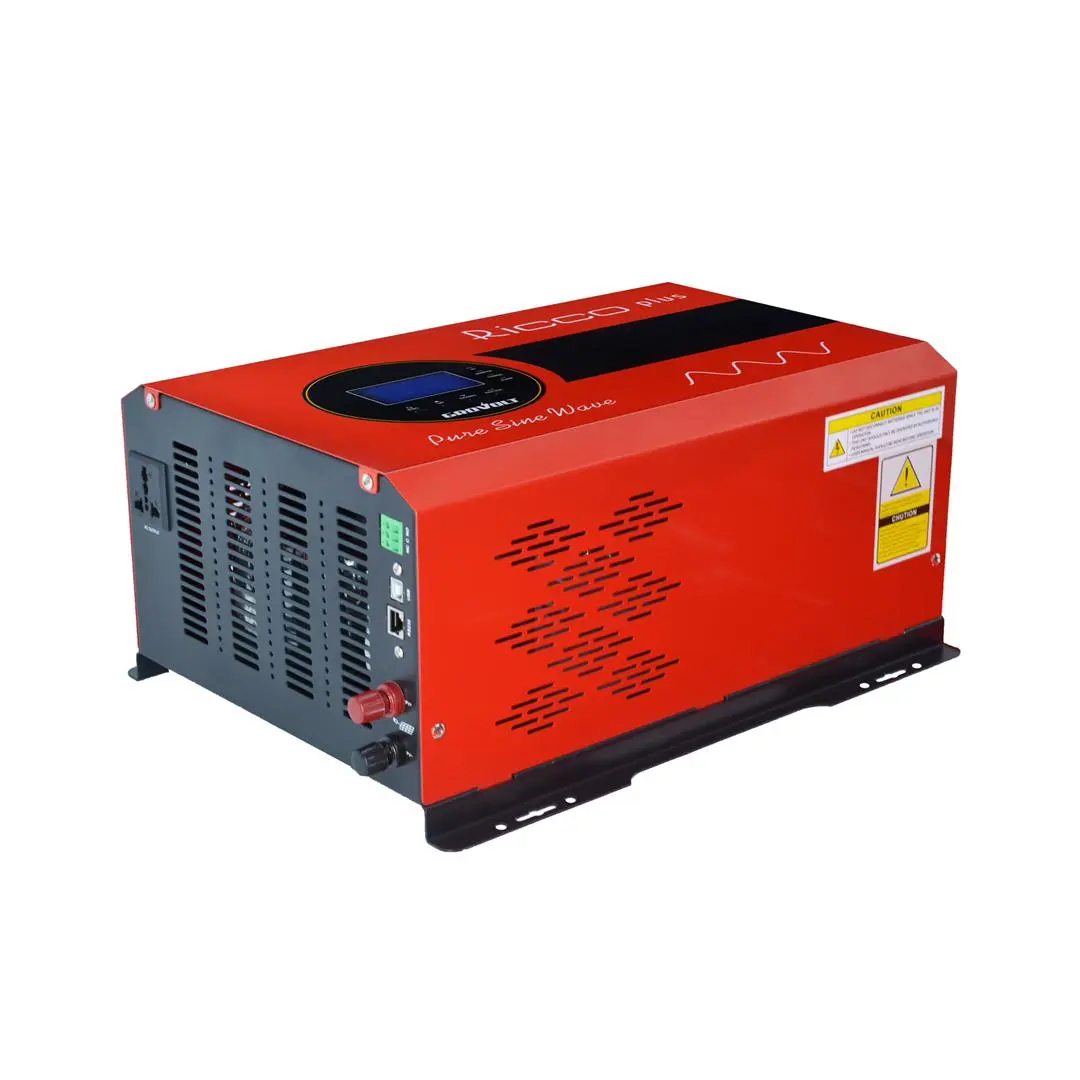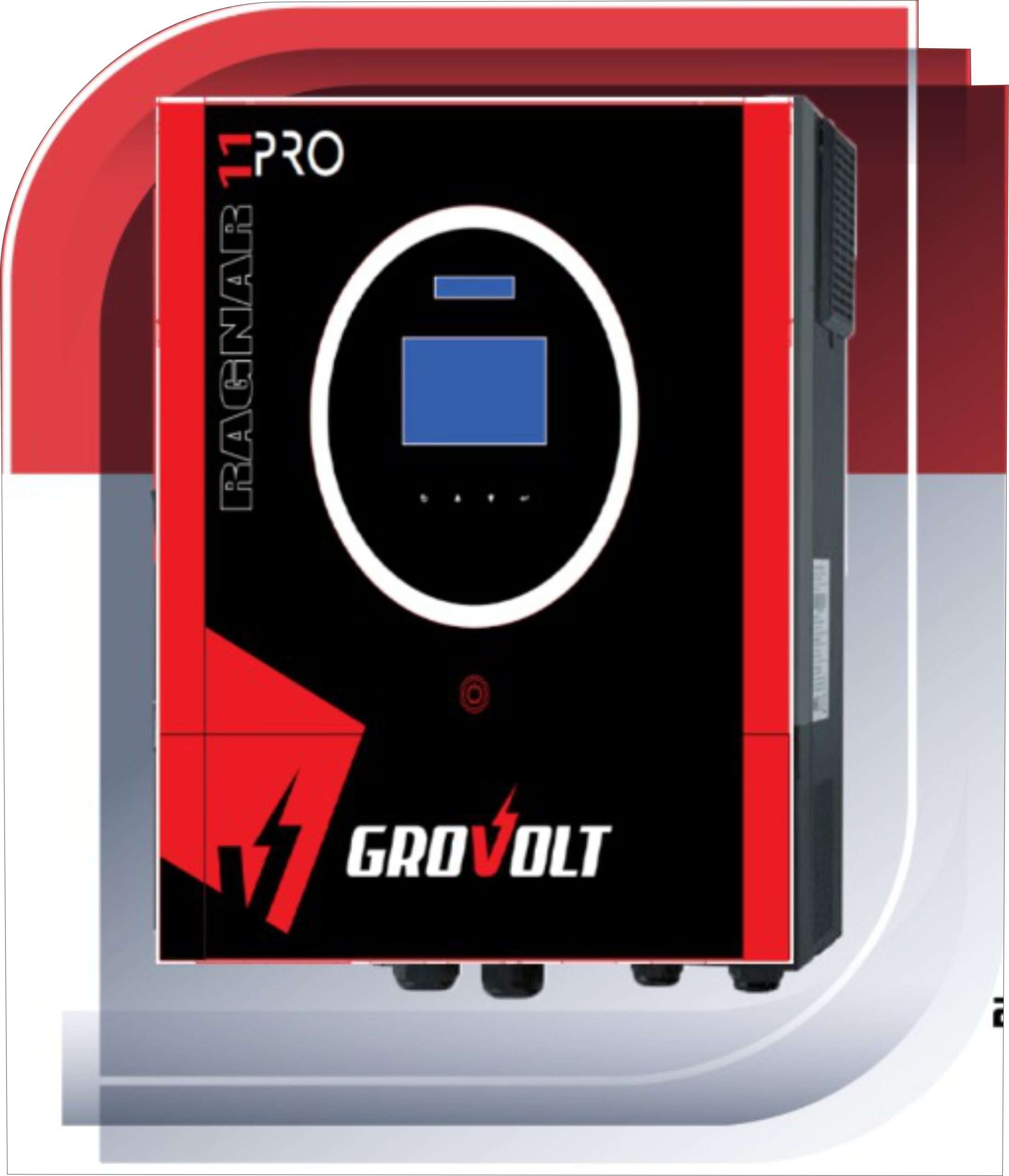What’s the best inverter voltage for your home?
An inverter is a reliable and efficient device that helps convert direct current (DC) electricity into alternating current (AC) electricity. It can be quite useful in many applications, and is commonly found in solar panels, wind turbines, and other equipment that requires AC power. Depending on the specific needs of the application, inverters can have different voltage ratings, with the most common options being 12V, 24V and 48V inverters. While all types can be useful, there are some key differences between them. Typically, smaller devices and applications use 24V inverters, while larger and more powerful systems require 48V inverters to function properly. This means that solar power plants and electric cars often rely on 48V inverters to convert the DC electricity they generate into the AC electricity that we use every day.

An inverter is a reliable and efficient device that helps convert direct current (DC) electricity into alternating current (AC) electricity. It can be quite useful in many applications, and is commonly found in solar panels, wind turbines, and other equipment that requires AC power. Depending on the specific needs of the application, inverters can have different voltage ratings, with the most common options being 12V, 24V and 48V inverters. While all types can be useful, there are some key differences between them. Typically, smaller devices and applications use 24V inverters, while larger and more powerful systems require 48V inverters to function properly. This means that solar power plants and electric cars often rely on 48V inverters to convert the DC electricity they generate into the AC electricity that we use every day.
Many people now prefer using 48V solar power at home due to its great ability in generating electricity and helping save energy.
More and more people are opting for 48-volt systems for their home solar power as they deliver superior performance. They use inverters that are specifically designed to make maximum power from limited space. Compared to 24-volt inverters, the 48-volt ones are much more efficient, utilizing less power to produce better results. In fact, they can generate twice as much energy output as their 24-volt counterparts. Since larger panels require 48-volt inverters, it becomes easier to install the wires in confined spaces, without the need to spend more money on larger spaces. Moreover, in case more panels need to be installed later, it can be done effortlessly without any modifications, thanks to the uniform connectivity.
The 48-v inverter is good if you have things that use a lot of power.
To run a fridge that needs 24 volts and 1200 watts, you need a 48-volt motor. There are two types of inverters we are looking at here – 24-volt and 48-volt inverters. 48-volt inverters are better because they save power and create more energy, compared to 24-volt inverters. Large inverters are better than small ones at the same voltage. For instance, a 48-volt inverter that is 500 watts can power two 33-watt lamps, but a 12-volt inverter that’s 500 watts can’t do that since it doesn’t produce as much energy.
A 48V inverter can run the same high-power-consuming appliances as a 24V inverter, but with greater efficiency.
48V inverters are better than lower voltage ones because they work more efficiently. They produce less heat and use a higher frequency of power. This makes them more efficient than 24V DC systems. Inverters change the power stored in your batteries, which starts as low voltage direct current (DC), into power for your home, which is higher voltage alternating current (AC). A higher voltage inverter is better because it produces less heat and uses a different kind of power that also makes less heat.

If your appliances need 110V-120V or 220V-230V power, then a 24V inverter might be useful. These types of inverters work well for lights, fans, and small appliances, and can also be used for small TVs and fridges. You need two 12V batteries connected to create 24V power to run the items. The batteries can be charged using solar panels during the day or traditional electric outlets at night. The inverter can change the battery power into 120/240V AC (110/220V AC) power for the appliances. Different models of inverters can provide different amounts of power, generally between 800W-2000W.
A 24 volt system is great for small devices that don't require much power.
The 24v inverter has less power than the 48volt inverter, but it can power smaller devices such as TVs, lamps, and other similar appliances.48v system is suitable for high-voltage appliances. The 48volt inverter has more power than the 24-v inverter, so it’s better suited to powering larger devices like air conditioners or refrigerators.48-volt systems are also available if you want to run high-voltage appliances that require a large number of currents, such as stoves and electric ovens The 48volt inverter is the best choice to power your home with solar panels. It's also the best option to power high-voltage appliances such as air conditioners or refrigerators. 48v systems are available for those who want to run high-voltage machines without installing a second battery bank.
A 24V inverter converts battery power to 120/240V AC.
If you have a small TV or laptop, a 24-volt inverter can help power them. Additionally, if you’re working on a construction site without regular power outlets, you can use it to power some tools.
A 48-volt converter can use the battery in your car to create 240 V of electricity for your home. You can plug appliances into the wall, or use “power sharing.” This allows multiple devices to use the power at once without any trouble.
The 24-volt inverter requires two 12-volt batteries.
A 24V system is for low-power appliances and uses one fuse. A 48V system can handle heavier-duty appliances, like refrigerators and microwaves. It costs more because it needs four times as many batteries. But, it performs better because each battery cell produces twice the voltage of a 12V one. This higher voltage means a more powerful motor and moving heavier loads. A 48V system is also more efficient because it uses less current than a 12V system. The voltage of your RV is determined by the number of batteries in your system. A 24V system has two 12V batteries wired together, while a 48V system needs four 12V batteries wired together.
48-volt battery packs can be made with 4x 12-volt batteries or 8x 6-volt batteries.
A 48V battery pack can power more things than a 24V one. This is because it can use stronger motors and run appliances like washing machines and microwaves for longer. 48V systems are better than 24V ones because they need fewer parts, so they lose less energy. Using a higher voltage also means that the wires can be thinner, which makes the battery pack lighter and more efficient overall.
48V inverters are more durable & powerful than 24V inverters.
48-volt inverters are more powerful and last longer than 24-volt inverters. They can run high power-consuming appliances just like 24-volt ones, but with greater efficiency. This means you won’t need to buy a new inverter as often and save money on your utility bill over time. 24-volt inverters are good for small loads and low-power consumption appliances like LED lights, fans, and tea kettles. On the other hand, 48-volt inverters are suitable for high power-consuming appliances like microwaves, coffee makers, and vacuum cleaners. However, 48-volt inverters are more expensive than 24-volt inverters because they need more components and use more energy.
in Conclusion
The power of a 48-volt inverter is double that of a 24-volt one. The power it gives is measured in amps, which means the more amps it has, the more devices it can run. So, if you have many devices to power up, you can select a 48-volt inverter. But if you have fewer devices, a 24-volt inverter can work fine.